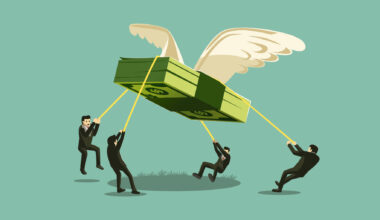This year has been a tough one for investors. Both bonds and equities have seen major price declines, in fact a combined stock and bond portfolio has, on average, suffered its worst year for performance in close to a century. Inflation has hit its highest levels in 40 years, while interest rates have been raised in many developed markets at their fastest pace ever. This begs the question: what can we expect in 2023?
Next week we’ll use our final episode of this year to discuss the buying side of the equation, in other words, what assets, sectors, and the timing of such buys, do we think make sense next year given the current economic and geopolitical outlook. This week, however, we think it wise to remind investors of the critical importance of the decision of what not to buy, and how to think about risk management for portfolios.
Avoiding certain risks is fundamental to successful long-term investing, just as much as investing in the right assets is core to investment success. What you don’t buy, is just as important as what you do buy. This year has taught that lesson in a harsh way to many fund managers and retail investors alike.
Trying to predict outcomes in 2023 of the war in Ukraine, inflation levels, interest rates, or economic outcomes, is a fool’s errand. No person or institution has any special insight into predicting the unpredictable. But we can identify a broader direction of travel for certainty itself, in that there is, undoubtedly, much less of it. We also know from previous cycles of war, pandemic, and subsequent inflation (we have been here before), that periods of volatility and uncertainty can last a long time. Inflationary cycles of the past have rarely lasted just 1 to 2 years but have typically resulted in 5 to 10 year cycles of volatile price levels.
Although we cannot predict with any accuracy specifics on what 2023 will look like for the economy, we can say, therefore, with some confidence that it will probably look more like 2022 (continued uncertainty, volatile economy and inflation) than it will look like, for example, 2015 (stable positive economic growth, low inflation and interest rates).
This means the investment environment is likely to continue to favour what worked in 2022 (more on that next week!), and most importantly for this week’s episode, next year will likely continue to punish those investments and risk allocations which have recently fallen out of favour.
A prudent approach to risk taking and risk avoidance for 2023 is to avoid the risk of a catastrophic loss. In other words, whatever you do don’t blow up.
Already this year some major investment funds have done just that, delivering negative performance which they are unlikely to recover from for some time. By July of this year Tiger Global, one of the star hedge funds of the last few years of the stock bull market, was down by 50%. Remember hedge funds are meant to be lower volatility and ‘hedge’ risk. If any asset falls by 50%, to get back to its previous highs it needs to double, in other words you need a subsequent 100% return just to break even on an investment made at the last high.
ARK Innovation Fund ETF, another favourite for investors in 2020 and 2021, its fund manager regularly appearing on Bloomberg and CNBC in 2020 and 2021, and lauded almost as a guru for the investing world, started to see major declines in price last year, accelerating this year into a major decline. Peak-to-trough since January 2021 that fund has lost 75% of its value. To recover that loss and just to return to the level the fund was valued at last year, the Fund from today would need to generate a +300% return.
Disclaimer: The views expressed in this article are those of the author at the date of publication and not necessarily those of Dominion Capital Strategies Limited or its related companies. The content of this article is not intended as investment advice and will not be updated after publication. Images, video, quotations from literature and any such material which may be subject to copyright is reproduced in whole or in part in this article on the basis of Fair use as applied to news reporting and journalistic comment on events.


